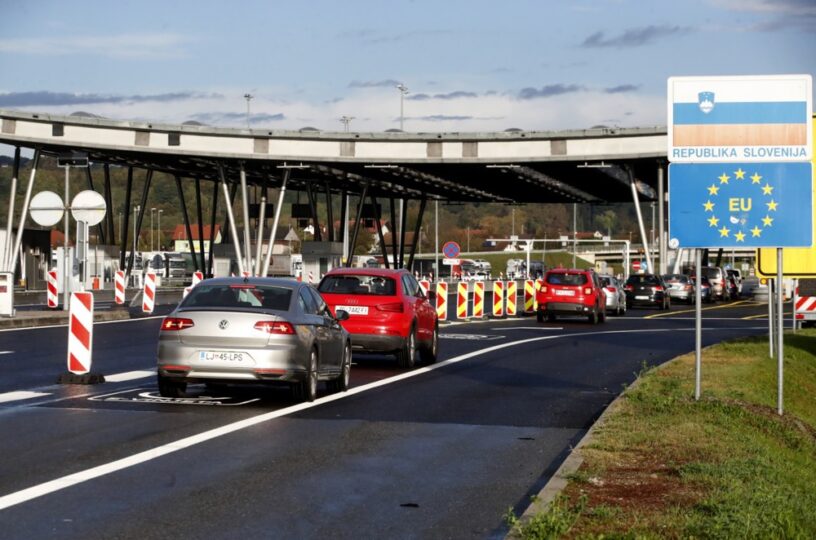At a meeting with Slovenian and Italian counterparts, Croatian minister says half the migrants and asylum seekers reaching Croatia come from countries that have visa-free arrangements with Bosnia.
Croatia, Slovenia and Italy’s common goal is to replace internal border controls with another cooperation mechanism by the start of the tourist season, Croatian Interior Minister Davor Bozinovic said on Thursday after a meeting with his colleagues from Slovenia, Bostjan Poklukar, and Italy, Matteo Piantedosi, in the Slovenian town of Brdo kod Kranja.
Bozinovic emphasized a 17-per-cent decrease in the number of illegal migrants entering Croatia comparied to last year – but almost 40 per cent more entries were recorded in Bosnia and Herzegovina, according to international conservative estimates.
In this context, the minister singled out that more than 50 per cent of asylum seekers in Croatia are citizens of countries such as Turkey, Russia and China that have visa-free agreements with Bosnia or Serbia.
Taking advantage of this, migrants come to Bosnia on commercial flights as tourists and try to enter Croatia illegally and request international protection.
Bozinovic said citizens of those countries, “unless there is a really individual case that can be proven, do not meet the conditions for international protection on the territory of the EU”.
According to him, this problem needs to be solved so that the countries that want to join the European Union harmonize their visa policy with the EU.
The Council of Europe approved the opening of accession negotiations with Bosnia and Herzegovina on Thursday.
“Our common goal is to replace these internal controls with other cooperation mechanisms by the beginning of the tourist season this year, from the sixth month,” Bozinovic said after the third meeting of foreign ministers.
The Slovenian agency STA said the Croatian, Slovenian and Italian ministers advocated the establishment of trilateral mixed police patrols in the border area as soon as possible. Bozinovic said he hopes the heads of the border police of the three countries will soon discuss this in Cetingrad, Croatia.
Efforts to increase cooperation between the three states to curb the flow of refugees coming from the so-called “Balkan Route” started as soon as Giorgia Meloni became Italian Prime Minister in October 2022 and have intensified since.
A similar trilateral meeting took place in Trieste, Italy, in November 2023, resulting in Italian and Slovenian mixed police patrols monitoring areas in Slovenia close to the Italian border.
Earlier, in 2020, Italy and Slovenia worked together on the so-called ‘informal readmissions’ that saw Italian police arrest migrants and refugees who had crossed illegally into the Trieste area, process them via an accelerated procedure, and then hand them back to Slovenia.
Slovenia then would send them back to Croatia, until eventually, they found themselves back in Bosnia, which is notorious for its dire conditions. In January 2021, an Italian court ruled the practice unlawful. Italy’s government tried to resume it in January 2023 but the attempt was unsuccessful.
The Autonomous Police Syndicate, SAP, of Italy’s Friuli-Venezia-Giulia region welcomed the announcement of the trilateral meeting, while lamenting that there are not enough poilice to patrol the whole border area and calling for a bigger budget from the government.
The Regional secretary of the SAP, Olivo Comelli, told local TV on March 18 that new controls introduced following suspension of the Schengen rules had ”not lead to a decisive change of pace with respect to rejections” and that police in the region are expecting the flow of migrants to increase in spring, “as has usually happened for the past 5-6 years.”



